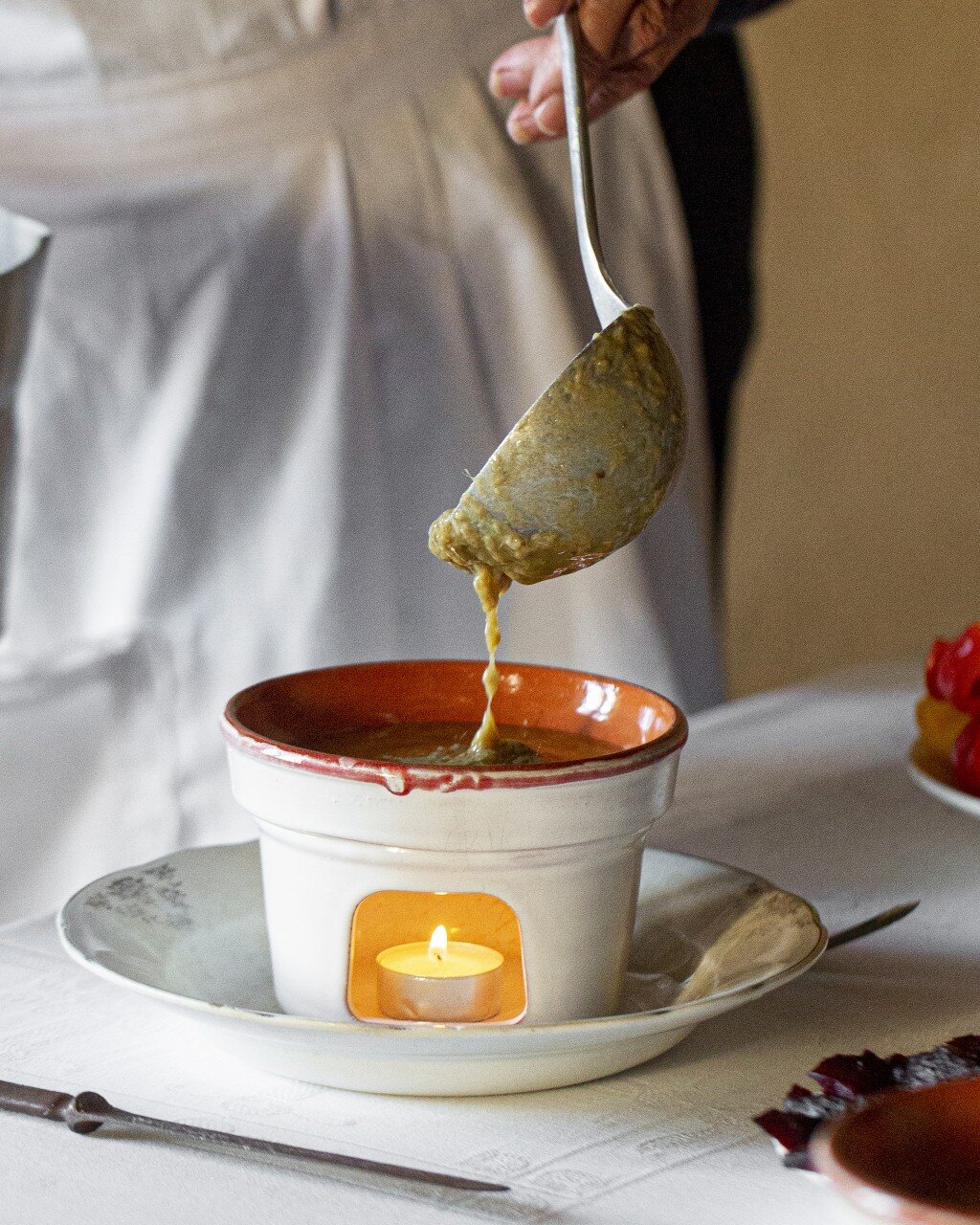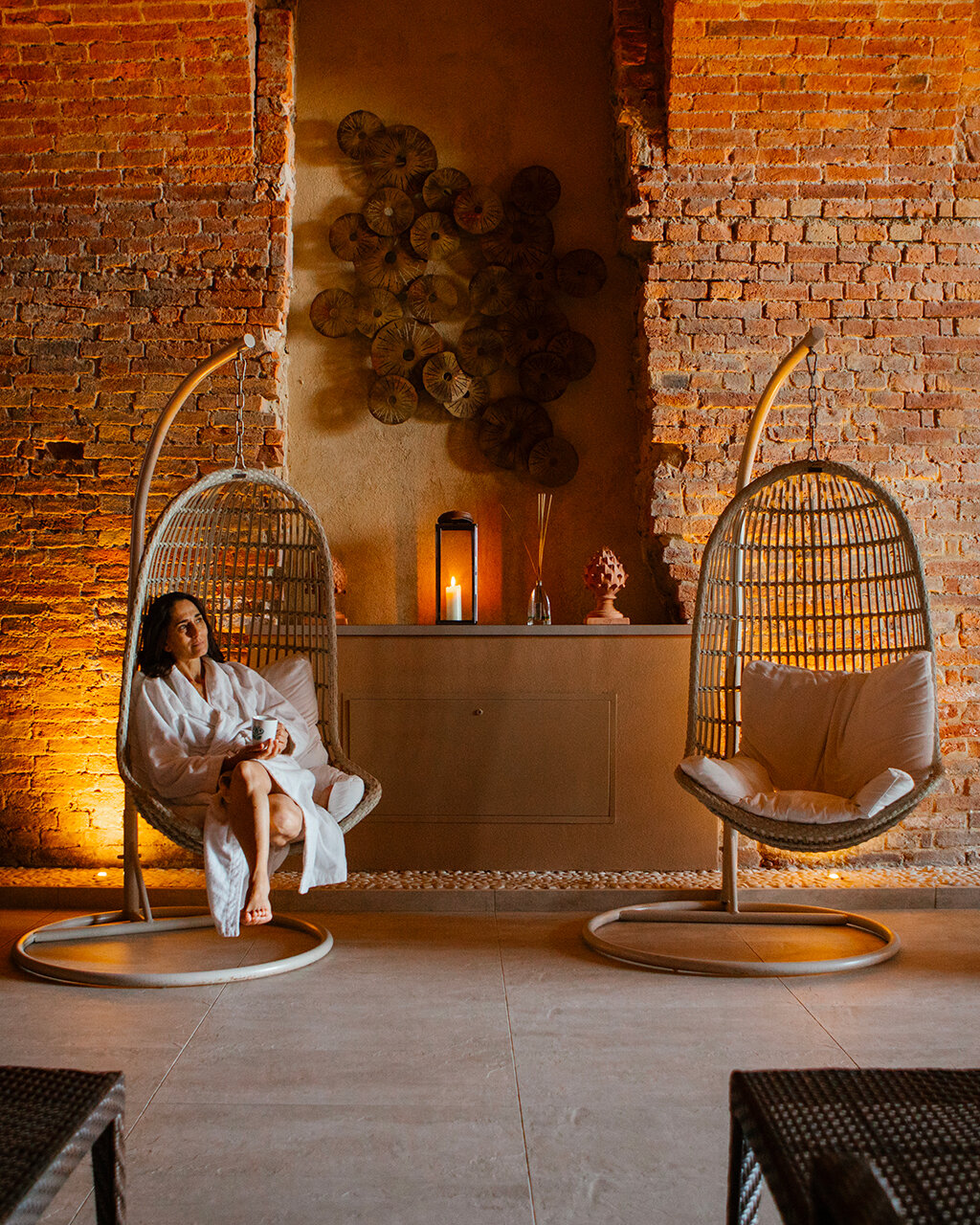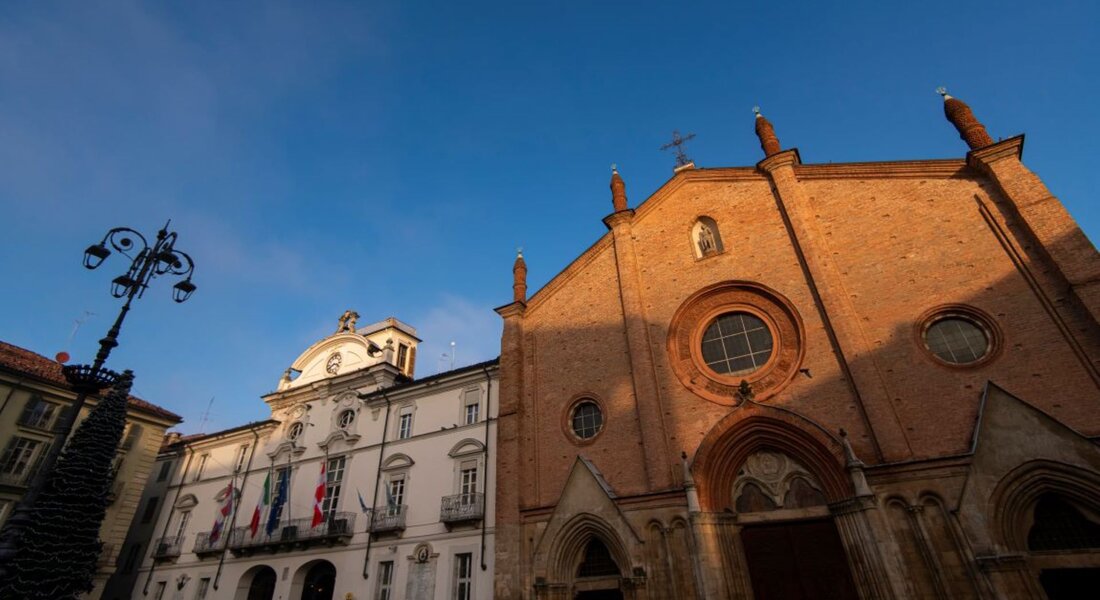Find out more
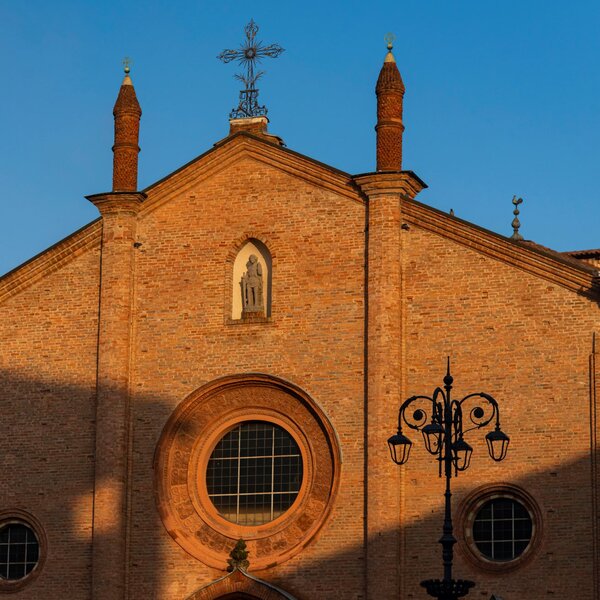
Asti, a true medieval capital
Find out moreAfter the fall of the Roman Empire, the city of Asti was re-built from the ashes of Hasta Pompeia and in a few decades became one of the most flourishing centres in Europe, thanks to its favourable position at the crossroads of some of the key transit routes in northern Italy.
It is very easy to get to the San Secondo district, the heart of the city: from the railway station in Piazza Marconi, follow Via Cavour. This was one of the ancient access roads to the city, running through the popular village of San Quirico to one of the ten gates of Asti, the one called Sancti Pauli (first documented in 1292). In the extra muros borough there were no noble palaces, but hovels and shops and a mill to which the bealera (the name of the system of artificial canals that surrounded the walls and by extension today identifies every irrigation canal) brought water, which also supplied the many local silk and wool factories.
Today, Via Cavour is more vibrant than ever, and so only an attentive eye will notice, amidst the modern houses and shop windows, the historic buildings nestled between the palaces: among them, on the west side of the street, the Church of the Holy Trinity (seat of an archconfraternity founded in the 14th century) with an elegant 19th-century façade and bright 18th-century interiors. The two medieval windows with terracotta and tufa arches incorporated into a modern building next door are all that is left of the former Hospice of Sant'Evasio. Hospices or hospitals were the hotels of the past, almost always run by religious orders and usually located at the city gates.
Find out more
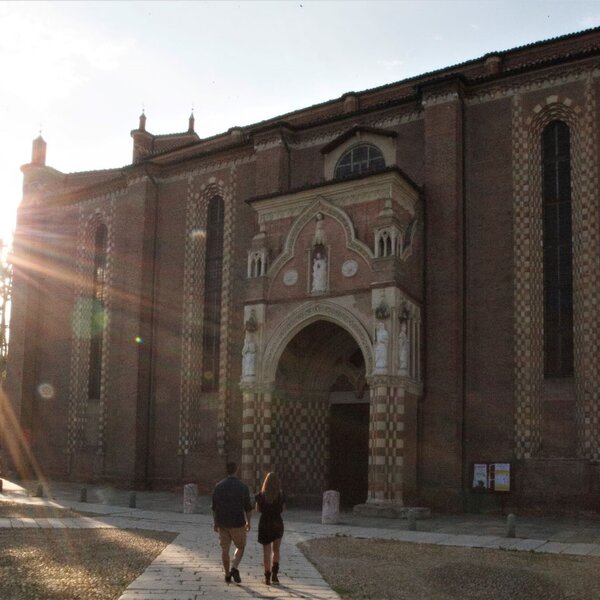
Asti, the Duomo District
Find out moreBefore reaching the square, the road splits and attention is drawn to the left, up a flight of narrow steps, to the late 18th-century church of San Paolo, all in terracotta, which houses a "Madonna del Rosario" ("Our Lady of the Rosary"), traditionally attributed to Moncalvo's daughter, Orsola Caccia. Still on the left, you will find the entrance to Via XX Settembre, the ancient riva Carrera (i.e. cart road), which takes you to the San Martino - San Rocco district (see route "Asti, among the fortified houses of San Martino") with one of the most beautiful fortified houses in the city: Palazzo Catena, whose terracotta façade still preserves the two-coloured frames and lintels of the mullioned windows.
Retracing our steps, we come to Piazza Statuto - the ancient Piazza delle Erbe or dei Guttuari. The Torre dei Guttuari (Guttuari Tower), symbol of the noble family, after they were banished, was severed off to an inclined plane until 1898, when it was topped with new Ghibelline battlements. On the same square stands the austere Palazzo dei Tribunali (13th-14th century), whose terracotta windows are clearly visible amidst the more recent plasterwork. It is not always easy to identify the history of a palace, especially when several destructions and reconstructions have been carried out on top of each other: for example, the other palace in Piazza Statuto, with its large and elegant Gothic windows, has only recently been identified as the Palazzo del Podestà.
The Collegiate Church of San Secondo is truly remarkable: the mid-15th-century terracotta façade, with its elegant central terracotta rose window and three portals, introduces the building's Gothic interior, marked by the red of the brick and the straw yellow of the soft sandstone. The church, which legend has it that it was built on the site of the patron saint's martyrdom, dates back to the second half of the 13th century, but preserves treasures from various periods, including the 10th-century bell tower and crypt (where the 16th-century silver reliquary of the saint is kept), the extraordinary polyptych with the the “Adorazione dei Magi” (Adoration of the Magi) by Gandolfino da Roreto (or d'Asti) on the left-hand wall of the entrance, and 18th-century altars in coloured marble. Of equal importance to the city is the Carroccio del Palio (a modern copy of the one carried into battle in the Middle Ages). In the past it was located in the chapel immediately to the right of the main door, where the various Palios donated by the municipality of Asti to the Collegiate Church on the first Tuesday in May are also kept, and which will be contended for in September.
Find out more
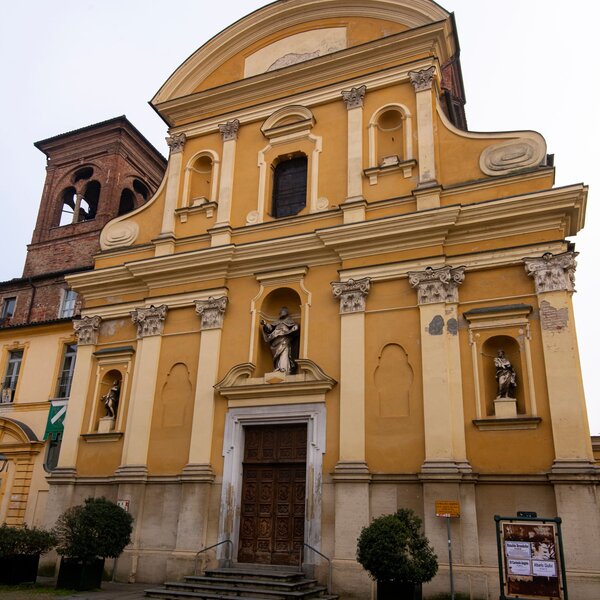
Asti, among the fortified houses of San Martino
Find out moreNext to the Collegiate Church lies Palazzo di Città (the Town Hall), whose medieval aspect is now completely disguised by the radical renovation carried out in the first half of the 18th century by a very young Benedetto Alfieri. In the vaulted atrium we find the medieval "touchstone", for the linear measurements of the "mon" brick and the "cop" roof tile, strictly enforced on the city market. The motto Aste Nitet Mundo Sancto Custode Secundo (Asti shines in the world thanks to its patron saint, San Secondo) appears on the first floor, and a copy of the Laveglia painting preserved in Palazzo Mazzetti (see route "Asti, the Duomo district") depicts the magnificence of the city in the 17th century with its countless towers and churches rising above the walls.
The Bertramenghi-Scarampi Tower, which according to the Statutes no other tower could exceed in height, stood between Piazza San Secondo and Piazza Statuto and can still be seen today among the bricks left on the façade of the porticoed buildings on the southern side. However, if you walk under the opposite Portici degli Orefici (Goldsmiths Porticos) with their beautiful capitals (this used to be the Palazzo della Guardia), you will get to the other side of the square, in the short Via dei Cappellai: at the crossroads with Via Incisa (the ancient Contrada dei Pellicciai, district of the furriers) you will find the Gothic palace once known as "del Podestà".
This elegant-looking building, with a sturdy central column supporting the splendid vaults of the hall, visible on the ground floor and in the cellars, was renowned as the seat of the Notaries' Guild. If you continue along Via Incisa you will find yourself on Corso Alfieri: the majestic brick building on the corner is Palazzo Montalcini (belonging to the family of Nobel Prize winner Rita Levi Montalcini) and it covers the whole block as far as the Portici dei Librai (the Booksellers’ Porches). Along the Corso, on both sides, there is a series of shops, including early 20th-century shop windows and original Art Nouveau decorations.
Find out more
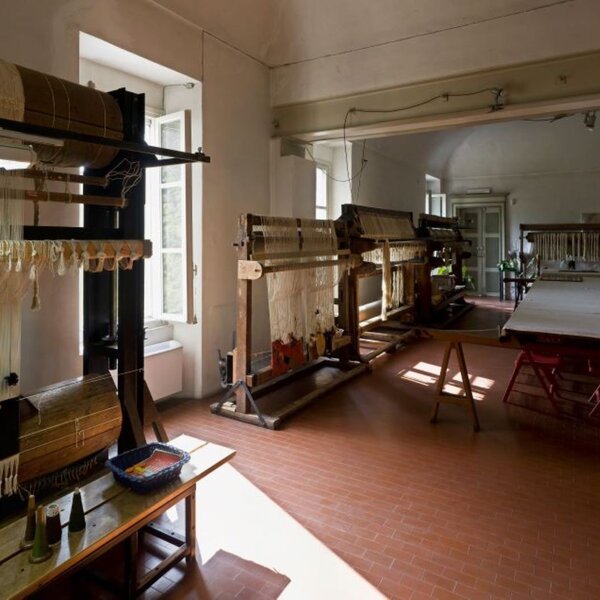
A stroll through the “ventine” – from Asti to Viatosto
Find out moreAs you continue the "struscio", the stroll along the main street, from Via al Teatro you can reach the 19th-century Alfieri Theatre, built for a bet by the city's nobility, including Ottolenghi, in just two years. On the corner of the street there is also the Palazzo degli Spagnoli, another sumptuous residence of the Alfieri family, later sold to the captain of fortune Giangiacomo Trivulzio (appointed governor of Asti in 1494 by Charles VIII, King of France).
Back on Corso Alfieri, we turn onto the small Via Della Valle to see the tall Torre Troyana (Troyana Tower), or Clock Tower, a little further on in Piazza Medici, which a careful renovation work gave new life. The tower, built by the Troya family in the second half of the 13th century, changed hands after various vicissitudes and became the property of the Savoys: in 1560 Duke Emanuele Filiberto donated it to the Town Hall, which then installed a bell (still at the top of the tower) and a clock; with its 199 steps, it provides a priceless view of the whole old town and its surrounding hills. Piazza Medici, where we are now, was completely remodelled at the beginning of this century: the fountain, dating back to 1908, recalls the construction of the new city aqueduct, while some of the private houses (the Ivaldi-Vercelli house at number 2 with its Art Nouveau interior or the Taricco house, slightly medieval in style, on the corner with Via D'Azeglio) are evidence of the rise of the Asti petit bourgeoisie. Next, in Via Hope, we find the former Cistercian Monastery of the Consolata and the modest neoclassical church with a beautiful rococo altar inside, at the corner with Via Orfanotrofio; the narrow street then reaches Via Morelli where, round the corner, we find the remains of Palazzo Pergamo (later taken over by the Cistercians) and, on the opposite side, the small, intimate church of San Silvestro, very old but completely rebuilt in the 18th century, alongside Palazzo Visconti.
Find out more
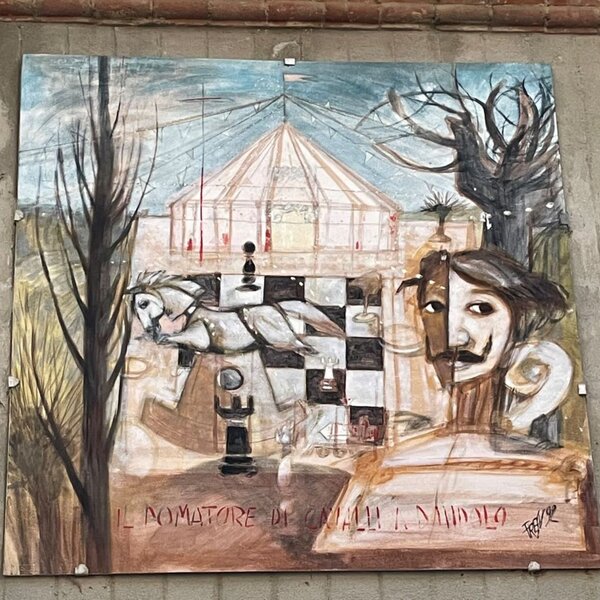
A stroll through the “ventine” – from Asti to Montemarzo
Find out moreFrom Via Morelli we return to Piazza Medici and turn onto the opposite side of Via Cesare Battisti, which holds other surprises for us: a splendid late 15th-century coffered ceiling in the vault of a shop (formerly Casa Rostagno) and other rooms with wooden vaults dating back to the same period in the ancient Casa della Piuma d'Oro (once a Carthusian hospice). At the end of the street, you enter Corso Dante, an avenue created in the 19th century in place of a large part of the eastern city walls, but in fact you are already in Piazza Alfieri, an unusual triangular-shaped square marked by the beautiful Piedmontese porticoes (those on the left are known as the Anfossi, on the right the Pogliani, while the short side is known as the Portici Rossi), with tree-lined avenues and the statue of the Dramatist in the centre. The newspaper and coffee rituals in the historic bars are unmissable city events, as is the ritual of the aperitif with the Americano, the world-famous Vermouth-based cocktail.
The medieval walls then continued northwards along the current Corso Dante, bending westwards around the Castrum Episcopi (where today we find Bosco dei Partigiani, the Partisans’ wood), running along the whole northern side and ending at the Torre Rossa (Red Tower). But let's return to Piazza Alfieri: here the Visconti family also built their citadel (the remains of the tower have been found, and are now marked on the south-west corner of the square with a special paving). The modern provincial building is counterpointed by the headquarters of the Cassa di Risparmio di Asti in Piazza della Libertà. Opposite, the former Casa Littoria (local Fascist Party headquarters) is a precious work of architecture.
Find out more
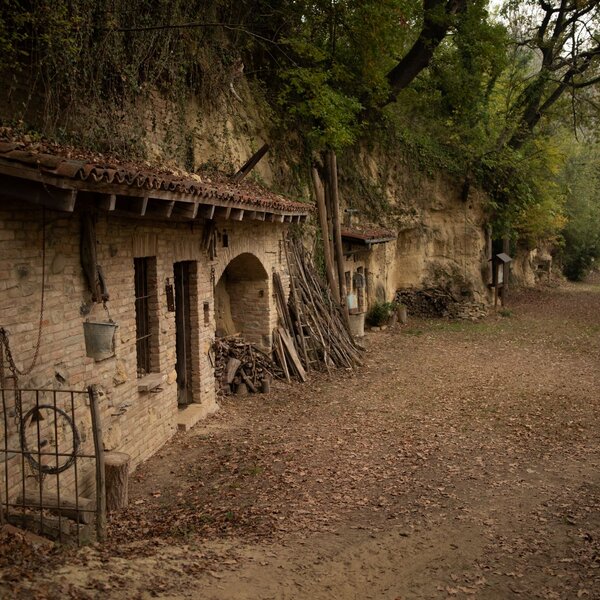
A stroll through the “ventine”: from Asti to Mombarone
Find out moreNext we head east, still along the main street: to the right, after a short distance, is the Orthodox Church of Santa Maria Nuova (which is of ancient origin, as shown by the 11th-century bell tower). Built in a mediaeval village outside the walls, it was renovated several times and today houses two of the most interesting works by Gandolfino da Roreto (or d'Asti). Walking along Via Ospedale we return to Corso Alfieri, continuing in the opposite direction. This brings us to one of the most interesting medieval monuments in the whole region: in Piazza 1 Maggio, we find a group of buildings known as "del vecchio San Pietro" ("of the old St Peter"). Actually, the building consists of a Rotunda of the Holy Sepulchre (built before 1169), then a Baptistery, a 15th-century square hall and a cross-vaulted cloister which probably included a hospice for pilgrims (namely San Pietro in Consavia). In fact, the complex was originally a commandery of the Order of the Knights of Malta, set up to house and protect wayfarers on their pilgrimage to the Holy Land.
PLEASE NOTE: Responsibility for the maintenance and practicability of the various trails lies with the municipalities where the routes are located. The Tourist Board, therefore, cannot be held responsible for any inefficiencies, but is willingly available to collect your reports so that they can be forwarded to the authorities concerned.
